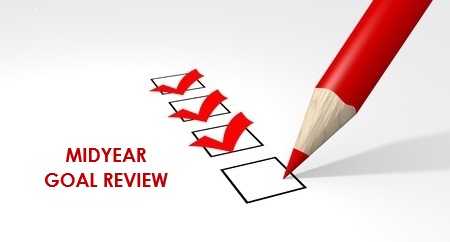We can't find the internet
Attempting to reconnect
Something went wrong!
Hang in there while we get back on track
Crafting a Personal Development Plan: Setting Goals for Professional Success
Our Article Full Details

Crafting a Personal Development Plan: Setting Goals for Professional Success
What does it take to grow and succeed in your career?
In today's competitive landscape, success is not merely a matter of chance; it is the product of strategic planning, continuous learning, and unwavering determination. Embarking on the journey of professional growth and success requires more than just ambition; it demands a strategic roadmap to help you as you work towards achieving your aspirations.
At the heart of this roadmap lies a Personal Development Plan, a dynamic framework that outlines clear goals and actionable steps for advancing your career.
In this article, we look at creating a personal development plan and how to set goals that will propel you career growth.
1. Defining Your Destination: Setting Clear Goals
At the heart of every successful career lies a compelling vision—a vivid depiction of the future you aspire to create. Whether aiming for career advancement, skill enhancement, or personal growth, defining your destination with precision is paramount.
By having specific, measurable, achievable, relevant, and time-bound (SMART) objectives, you lay the groundwork for a strategic approach to personal development that aligns seamlessly with your aspirations.
2. Mapping Your Journey: Identifying Key Milestones
Once your goals are established, the next step in crafting a Personal Development Plan involves mapping out the journey toward their realization. This entails identifying key milestones or checkpoints along the way, each representing a significant step forward in your professional evolution.
Whether acquiring new certifications, gaining relevant experience, or expanding your network, these milestones serve as navigational markers that guide your progress and measure your achievements.
3. Navigating Obstacles: Anticipating Challenges and Opportunities
No journey toward career success is without its obstacles and challenges. As such, an effective Personal Development Plan must incorporate strategies for navigating adversity and seizing opportunities along the way.
Embrace setbacks as opportunities for growth, for it is through adversity that resilience is born. Cultivate a mindset of unwavering belief in your ability to overcome obstacles.
By conducting a comprehensive analysis of potential barriers and enablers, you can proactively identify solutions to overcome obstacles and capitalize on favourable circumstances. This proactive approach not only mitigates risk but also cultivates resilience and adaptability.
4. Equipping Yourself with Knowledge: The Arsenal of the Modern Trailblazer
In the dynamic landscape of today's workforce, knowledge is not just power; it's the currency of success. Equip yourself with the tools of the trade, whether through formal education, continuous learning initiatives, or immersive experiential opportunities. Stay curious and keep learning.
5. Leveraging Resources: Tapping into Support Networks
Success is rarely achieved in isolation. Leverage the support of mentors, peers, and professional networks to augment your journey toward success.
Whether seeking guidance, feedback, or collaboration, tapping into these resources can provide invaluable insights and support as you progress along your chosen path.
6. Evaluating Progress: Reflecting and Adjusting Course
Evaluation is essential to ensuring that you remain on course toward your goals. A good personal development plan incorporates mechanisms for tracking progress, assessing outcomes, and recalibrating strategies as needed.
By regularly reviewing your achievements, identifying areas for improvement, and adjusting your approach accordingly, you demonstrate a commitment to continuous learning and growth that propels you closer to achieving your goals.
Crafting a personal development plan is not just an exercise in goal setting; it is a strategic endeavor aimed at fostering professional success and fulfilment. By defining clear objectives, mapping out your journey, anticipating challenges, leveraging resources, and evaluating progress, you empower yourself to take control of your professional destiny and realize your full potential.
Prev
The Role of Constructive Feedback in Driving Employee Performance and Growth
Next
Decoding Workplace Dynamics: Understanding the Unwritten Rules for Professional Success





